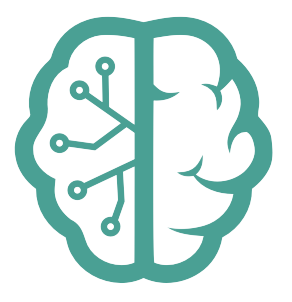this.img is a module within the all.this family, designed to abstract and standardize image data, transforming it into a structured format that is readily accessible and interpretable by machine learning models.
The this.img library offers several predefined presets for image processing, allowing for easy configuration depending on your needs. Below is the list of available presets:
-
default64: Standard 64x64 resolution, 3 channels (rgb) color, 'jpeg'. -
small32: Small 32x32 resolution, 3 channels (rgb) color, 'jpeg'. -
large128: Large 128x128 resolution, 3 channels (rgb) color, 'jpeg'. -
highResColor256: High-resolution 256x256, 3 channels (rgb) color, 'jpeg'. -
grayscale32: Small 32x32 resolution, grayscale 1 color channel, 'jpeg'. -
grayscale64: Standard 64x64 resolution, grayscale 1 color channel, 'jpeg'. -
highResGray256: High-resolution 256x256, 1 color channel. grayscale, 'jpeg'.
You can use these presets directly by referencing their names when calling the thisImg function.
// Example of processing an image using a preset
const imagePath = 'path/to/image.jpg';
// Use a high-resolution grayscale preset
thisImg(imagePath, PRESETS.highResGray256)
.then(result => {
console.log('Processed Image:', result);
})
.catch(error => {
console.error('Error processing image:', error);
});Loading the Image: Using a helper function loadImage, which returns an HTMLImageElement that can be used on a canvas.
This function supports loading from both URLs and Blob objects.
Drawing the Image on Canvas: Setting up a canvas element, drawing the image onto it with the specified dimensions (resizing it in the process).
Extracting the Processed Image: Converting the canvas content to a Blob of the specified image format, then converting that Blob to an ArrayBuffer for further use or manipulation.
Logging and Output: Providing success and error logs through predefined logging functions and returning the processed image data or error via promises.
Setting default parameters and providing fallback sizes as a strategy for enhancing usability and flexibility in this.img library. Machine learning models often use specific image sizes depending on the model architecture and the task at hand. Below are some common sizes used in machine learning, along with color options, integrated as defaults or presets in your this.img library:
-
Small Size: Commonly used for basic models and when computational resources are limited.
- Size: 32x32
- Often used in datasets like CIFAR-10.
-
Medium Size: A balance between detail and computational efficiency.
- Size: 64x64 or 128x128
- Typical for intermediate complexity models.
-
Large Size: Used for models requiring high detail.
- Size: 256x256 or 299x299
- Used in more complex models, such as those for high-resolution image classification.
- RGB (Color): 3 channels (standard for colored images)
- Grayscale: 1 channel (used for reducing computational load or when color is not informative)
Standardization of Image Content: this.img standardizes various aspects of image data, including dimensions, color schemes, and encoding formats, ensuring uniformity and compatibility with ML models.
Data-Driven Image Analysis: The module supports data-driven approaches to image analysis, preparing image content not just for display but for in-depth computational examination and interpretation.
Machine Learning Readiness: The ultimate goal of this.img is to ensure that every processed image is structured in a way that makes it immediately usable for machine learning purposes, enhancing the data's value and applicability in intelligent systems.
We invite developers, image processing enthusiasts, and machine learning experts to contribute to the development of this.img. Your insights, expertise, and feedback are invaluable in shaping this module to be a pivotal tool in the intersection of web technology and machine learning.
this.img stands as a testament to the innovative spirit of the all.this family, pushing the boundaries of how image data is perceived and utilized in the digital age. By standardizing image data for machine learning, this.img not only enhances the interoperability of web-based image content but also paves the way for groundbreaking applications in AI and data science. Join us in developing this.img and help shape the future of intelligent image processing.
this.me - this.audio - this.text - this.wallet - this.img - this.pixel - be.this - this.DOM - this.env - this.GUI - this.be - this.video - this.atom - this.dictionaries
Each module in all.this represents a specific datastructure. These classes encapsulate the functionalities and data specific to their domain.
all.this not only aggregates these modules but also provides utilities to facilitate the integration, management, and enhancement of these data structures. For example:
The integration with cleaker ensures each module instance has a unique cryptographic identity, enhancing security and data integrity.
visit: Neurons.me Glossary
-
License: MIT License (see LICENSE for details).
-
Privacy Policy: Respects user privacy; no collection/storage of personal data.
-
Terms of Usage: Use responsibly. No guarantees/warranties provided. Terms | Privacy
Learn more at https://neurons.me
Author: SuiGn
